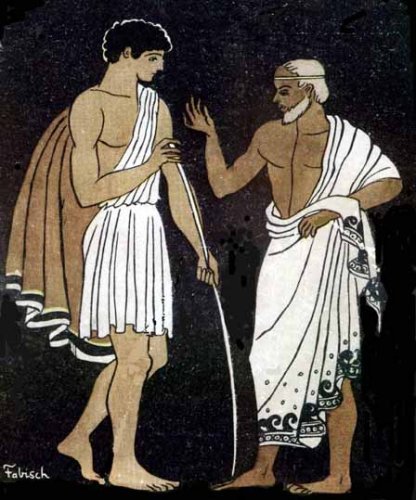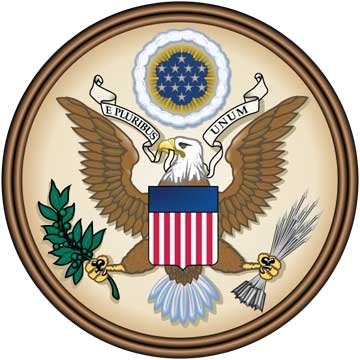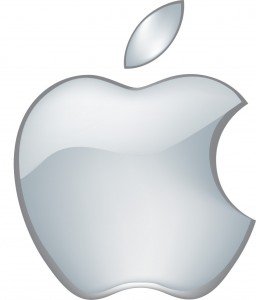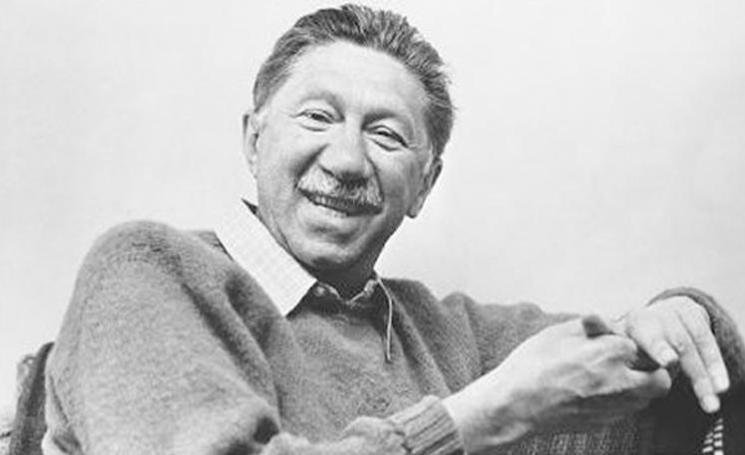THE BIG IDEA: Archetypes are at the core of effective marketing. They provide the most powerful way to attract the right customers. But archetypes are often misunderstood. This week, we examine the archetypal power of one of the world’s strongest brands.
__________________
A line of mindless drones in identical colorless uniforms march in unison through an underground industrial tunnel. The atmosphere is cold, lifeless, and gray.
They enter a large auditorium, sitting down in front of a movie-sized monitor. On the screen, Big Brother celebrates the anniversary of the “Information Purification Directive” that put an end to contradictory thought.
A woman with striking blond hair and an athletic build with bronzed skin charges toward the screen. Dressed like an Olympian in sharp red shorts and a white tank top, she is pursued by the Thought Police who wear riot uniforms and helmets.
As Big Brother declares, “We shall prevail!” our heroine hurls her Thor-like hammer at the screen, which explodes with a flash of light.
The voiceover reads: On January 24th, Apple Computer will introduce Macintosh. And you’ll see why 1984 won’t be like “1984.”
Steve Job’s Vision
This famous ad that debuted as a 1984 Superbowl commercial alludes to George Orwell’s novel 1984, where a futuristic totalitarian government controls its citizens through propaganda, surveillance, and brute force.
This totalitarian regime represents the status quo, the convention, the suppression of new and different ideas. The blond Olympian represents the outlier, the Trailblazer, someone who defies the odds and dares to be different.
Apple isn’t for people who accept the status quo. It’s for Trailblazers and Luminaries committed to changing the world, just like Steve Jobs was.
Here’s to the Crazy Ones
Apple’s 1997 Think Different campaign highlighted the same message with a different approach.
The spot highlighted footage of luminaries including Albert Einstein, Martin Luther King, Jr., Richard Branson, John Lennon with Yoko Ono, R. Buckminster Fuller, Thomas Edison, Mahatma Gandhi, Amelia Earhart, Martha Graham, Jim Henson, Frank Lloyd Wright, and Pablo Picasso.
Richard Dreyfus’s voice-over pays homage to the Trailblazers and Luminaries:
“Here’s to the crazy ones. The misfits. The rebels. The troublemakers. The round pegs in the square holes. The ones who see things differently. They’re not fond of rules. And they have no respect for the status quo. You can quote them, disagree with them, glorify or vilify them. About the only thing you can’t do is ignore them. Because they change things. They push the human race forward. And while some may see them as the crazy ones, we see genius. Because the people who are crazy enough to think they can change the world, are the ones who do.”
Apple has become a symbol of creativity, self-expression, originality, and nonconformity. Apple’s marketing team has exhibited a masterful ability to communicate the company’s core idea through images and symbols.
To better understand why Apple is so effective, we need to first understand how images and symbols influence the human mind.
The Power of The Image
Images affect us in ways we don’t consciously appreciate. Images excite emotion. Images can bind us together. They can also tear us apart.
When you learn how to effectively use images in your business, you have a powerful means to influence your customers, trigger emotions, establish trust, and inspire loyalty.
If you don’t have this knowledge, it is all but guaranteed that you will dilute your brand and weaken your position in the market over time.
What is an Archetype?
For psychologist Carl Jung, archetypes are the fundamental units of the human mind.
He pointed out that every civilized human being is still an archaic man in deeper levels of his mind. And within this ancient level of the mind, there are archetypes.
Jung describes archetypes as the forms or images of a collective nature that occur all over the earth. These images find their way into ancient religions, myths, legends, and fairy tales.
Their symbols are everywhere in our daily lives. We find evidence of archetypes in our own dreams, fantasies, and behavior.
We can observe archetypes in the characters in the stories we read, the films we watch, and the plays we attend.
Archetypes are pervasive throughout the arts, media, advertising, and pop culture. They silently influence our relationships with family, friends, and colleagues.
Archetypes are everywhere, even if only a select few know how to identify them.
The Archetype of The Apple
It’s just a simple piece of fruit, right?
Even something as commonplace as an apple is ripe with ancient symbolism and embedded meaning. (Sorry, we couldn’t resist the pun.)
The apple has always been a symbol of knowledge and freedom.
In the Garden of Eden, Eve is tempted by the serpent to eat the forbidden fruit from the Tree of Knowledge of Good and Evil. This act of rebellion leads to their expulsion from the garden.
The moment that Adam and Eve bit into the fruit, “the eyes of the two of them were open.” They became aware of their nakedness for the first time. With the loss of innocence, they wake up, setting the evolution of humanity in motion. The image of a bitten apple symbolizes this acquisition of consciousness.
The apple is also commonly associated with teachers, the bearers of knowledge. A student gives an apple to the teacher as a token of gratitude for this knowledge.
Apples were also considered a food for the gods. In Greek mythology, it is a symbol for Aphrodite, the supreme goddess of love and beauty.
In Celtic tradition, the apple tree is a symbol of creativity.
How Apple Capitalizes on Archetypal Symbolism
Apple (the company) didn’t have to create the association of an apple to awakening, creativity, knowledge, and freedom. Its customers were already hardwired with that information (on a subconscious level).
Apple just had to link its brand with the symbol.
The 1984 commercial did this effectively by retelling Orwell’s classic story in 60 seconds, positioning Apple as the company for people who wanted intellectual and creative liberation.
In the Think Different campaign, Apple associated itself with existing symbols of Trailblazers and Luminaries by simply paying homage to contemporary recognized bearers of knowledge and creativity.
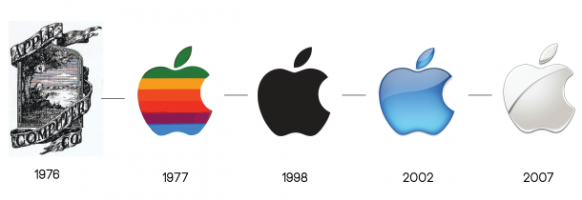
The Apple Logo Makes You Think Different
The Apple logo is now one of the most widely recognized images in the world, associated with creativity, self-expression, innovation, and nonconformity.
In fact, an empirical study published in the Journal of Consumer Research substantiates this association.
The researchers exposed participants to imperceptible images of brand logos for Apple and IBM. Prior to the exposure, participants reported feeling similarly about both brands except for creativity (Apple’s perceived strength) and competence (IBM’s perceived strength).
After the exposure, the participants were asked to describe as many uses for a brick as they could. Results showed that most participants described common uses such as doorstop or paperweight.
The Apple-primed subjects, however, gave an average of 30% more answers. Independent raters also deemed their answers as more creative. The IBM-primed subjects were strikingly uniform in their answers.
Overall, subjects exposed to the Apple logo demonstrated greater creativity compared to participants exposed to the IBM logo.
Through consistent messaging of its brand’s archetype, Apple has seeped into our collective mind. It has established itself as a harbinger of change, creation, and inspiration.
What’s Your Archetype?
Determining what archetype best represents your brand is a worthy endeavor that many national brands undergo. When you know your archetype, you can develop powerful messaging and product innovations that consistently attract the right customer.
Self-starters can begin the process by using a book like Mark and Pearson’s The Hero & The Outlaw. These authors provide 12 different archetypes to choose from.
Based on our research, we take a different approach. Although we maintain a database of over 3,500 active archetypes, we don’t select an archetype for a business.
A brand’s archetype already exists in the customer’s mind (even though they don’t know it). The goal is to probe your customers’ minds with questions designed to measure their unconscious associations to your brand.
Then, the archetype reveals itself.
